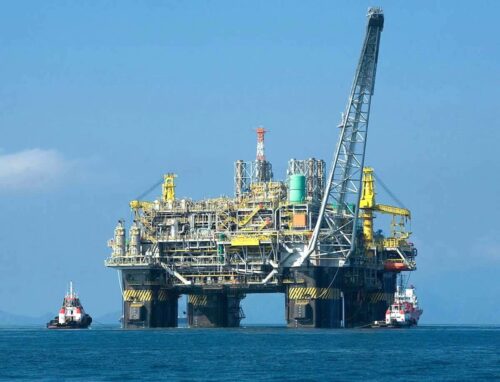Energy News Beat
ENB Pub Note: George McMillan, an ENB news contributor on energy and geopolitical topics, wrote this article. You can find my interviews with George on his landing page here: https://energynewsbeat.co/george-mcmillian/. He has an interesting view on the next steps President Trump needs to take in ending the Russian/Ukraine war. George and I will be recording another podcast this week to cover the next steps in the peace talks. This impacts energy on a global level.
George McMillan, Copyright © February 23, 2025/March 27, 2025
Foreword—to the “Why the Rubio Ceasefire Plan is DOA” Series of Papers that Supercedes the Kellogg Series
The rationale of the “Russian Natural Gas and Global Geopolitical Realignment” series of papers that placed the role of affordable Russian natural gas delivered via pipeline into Ambassador George Kennan’s “industrial power center” framework described in his “long telegram of 1946” and his famous “X” article in Foreign Affairs in 1947 was originally posted on Energy News Beat beginning on December 10, 2023.
The “Why the Kellogg Plan is/was DOA” series of papers and videos derived from a series of slide sets and videos regarding “The Role of Energy in the Kennan Five Industrial Power Center Strategies” and a series of “Sea Power versus Land Power Grand Strategy” slide sets and videos recorded on various small high informational-low production value YouTube channels arising from the February 2022 Russian invasion of Ukraine.
By the sheer volume of television generals and cable news anchors that routinely parrot the Bill Kristol and Kagan family narrative that the “Russian invasion of Ukraine was unprovoked, illegal and unjustified for the purpose of expanding the Russian empire” one can tell that none of the television generals know anything about 1) the Sea Power versus Land Power Grand Strategies; nor 2) the role that trading blocs play in the superpower, major power vassal state hierarchies that define superpower status; nor 3) the role that energy plays in integrated geoeconomic-geopolitical-unrestricted warfare targeting package strategies.
The Russiagate, Russian Collusion, and Russia Invaded For No Reason Hoax Trilogy
Since Frederick Kagan’s interview with Jordan Peterson on March 1, 2022, the Western television generals and news anchors have taken up the “Russians invaded Ukraine for no reason” hoax just as they did the “Russiagate” hoax and the “Russian Collusion” hoax.
In retrospect, the “Russia invaded for no reason” hoax narrative seems to have been advanced by General Jack Keane on Fox News and David Petraeus on CNN and other cable news programs. Both Keane and Petraeus are on the Board of Directors of the Institute for the Study of War (ISW) founded by Robert Kagan, Bill Kristol, John Bolton, and David Petraeus.
The short story here is that the Brzezinski/Wolfowitz/RAND 2019 strategic plans of encircling the Russian and Belarus borders with the European Union trading bloc’s tariff and non-tariff trading barriers to restrict virtually all Russian trade from entering Europe have succeeded.
However, the plan intended that the Russian Federation would collapse economically and politically into numerous separate oblasts, which would then expand the West’s superpower, major power vassal state hierarchy throughout Eurasia. This has failed as Russia and China formed an overland logistical supply route counterstrategy instead, yielding the result that the Brzezinski/Wolfowitz/RAND 2019 is bankrupting and disintegrating the Western alliance system instead.
Compounding the problem is that Europe in general, and Germany in particular, has created an energy calamity in Europe all of its own making and there is no reason for President Trump to let the American economy parallel the “strange death of Europe” with “the strange death of America” to borrow the phrasing of Douglas Murray’s 2017 book.
In this context, the “Russia invaded for no reason hoax” was developed as a false cover-for-action narrative to conceal the Brzezinski/Wolfowtiz/RAND 2019 strategic plans to break apart Russia into independent oblasts and then integrate the petroleum and mineral-rich lands into the superpower, major power vassal state hierarchy system that will be explained systematically in this series of papers.
The Overview of Energy and Geopolitical Realignment
The current energy crisis reality stems from the Greens shutting down the coal-fired energy plants and the nuclear energy plants in Germany and the Groningen natural gas field in the Netherlands, as the neoconservatives and neoliberals were weening themselves from Russian natural gas via pipeline across Europe, followed by the Baltic states unilaterally removing themselves from the Russian electrical grid more recently.
Another little-known reality is that the purpose of moving the EU Eastward to the Russian and Belarussian borders to was erect tariff and non-tariff barriers to stop all Russian trade to Europe including energy. The EU has been successful in this endeavor and has created the conditions under which “all Putin has to do is nothing” but let the European and British economies continue their respective downward spirals.
Throughout this multiyear process from the COVID-19 lockdown period that broke logistical and manufacturing supply chains that preceded the present energy price crisis in Europe, the German industry has been declining for multiple reasons, but cannot stay in business as Europe switches from reliable fossil fuels to unproven renewable energy forms.
The automotive industries are collapsing across Europe due to several longstanding inefficiencies and the rising energy costs seem to be the final nail in their collective coffins. They were becoming less competitive globally over the last two decades, but the movement of the EU Eastward to cut off all trade with Russia to thwart a natural gas and oil-funded export-led growth and economic modernization strategy, as the means of breaking apart Russia into separate oblasts, is proving to be a disastrous foreign policy.
The first problem is that far too few people outside of the energy and geopolitical space are aware of the geoeconomic, geopolitical, and unrestricted warfare strategies to redirect Western foreign policy away from a policy that is backfiring. The second problem is that too few people are even aware that this is the policy so they cannot recognize that a policy has backfired because they don’t realize that the policy existed in the first place.
The Kellogg Plan is DOA and so is the Rubio Cease-Fire Plan
The television generals and news anchors have fallen for a series of Russia hoaxes that are becoming increasingly absurd for the reasons explicated in the series of “Why the Rubio Ceasefire is DOA” series of papers and parallel Sea Power vs Land Power slide sets. Since Kellogg has been sidelined the series of papers had to be renamed, but the underlying causation has not changed at all.
There is simply no reason for President Trump to go along with the “Russia invaded for no reason” hoax since he has already been the target of the “Russiagate” and “Russian Collusion” hoaxes. One would think that Keith Kellogg would have advised against that, but he didn’t understand the fundamental aspects of the Sea Power versus Land Power Grand Strategies so he never realized that the Brzezinski/Wolfowitz/RAND 2019 policies were implemented in the first place, so he never realized that the Russia invaded Ukraine for no reason hoax” was a false cover-for-action narrative in the second place.
Kellogg was sidelined only after the Trump administration realized that Putin and his staff were in no hurry to meet with Donald Trump or any Western leader. The reason is obvious, since the EU moved Eastward and restricted all Russian trade to Europe, Russia has no business with the West and hence no reason to discuss anything further.
Putin and Xi Jinping’s best option is to “do nothing” and watch the European economies collapse as a consequence of their own logically incoherent foreign and domestic policies implemented by the neoconservatives, neoliberals, and the Greens.
President Trump is contending with the same Western coalition of neoconservatives, neoliberals, and Greens domestically as well as in the UK and European Union. His best option is to extract the United States from the Brzezinski/Wolfowitz/RAND 2019 disaster in Eastern Europe and expose the “Russia invaded for no reason” hoax of the ISW instead.
Part 7: Foreword to “Kellogg Plan is DOA” series of papers—the main talking point
Part 6: Why the Kellogg Plan is DOA Part 6: Keith Kellogg Mistook the Mission to End the War in Ukraine Instead of Ending the Globalists
Part 5: Keith Kellogg Understood Neither the Role of Energy in Geopolitics Nor the Role of Trading Blocs in Geopolitics.
Part 4: Keith Kellogg Had a Layman’s Understanding of the Wolfowitz Proxy War with Russia in Ukraine – All Putin has to do is nothing
Part 3: Understanding the Catastrophic Downside Risk of the Kellogg Plan and Exploring Alternatives
Part 2: Why Keith Kellogg’s Plan is DOA: Shifting the Global Political Center of Gravity Part 2
Part 1: Why Keith Kellogg’s Plan is DOA: Avoiding the Catastrophic Downside Risk of Russo-Ukraine Negotiations
George McMillan Articles and Interviews: https://energynewsbeat.co/george-mcmillian/
The post Why the Rubio Ceasefire Plan is DOA Part 8: The BLUF and the Overview of the Next Tranche of Papers appeared first on Energy News Beat.



















